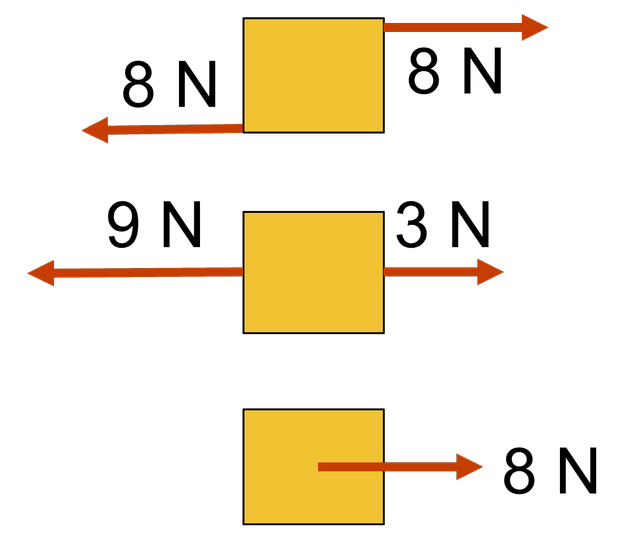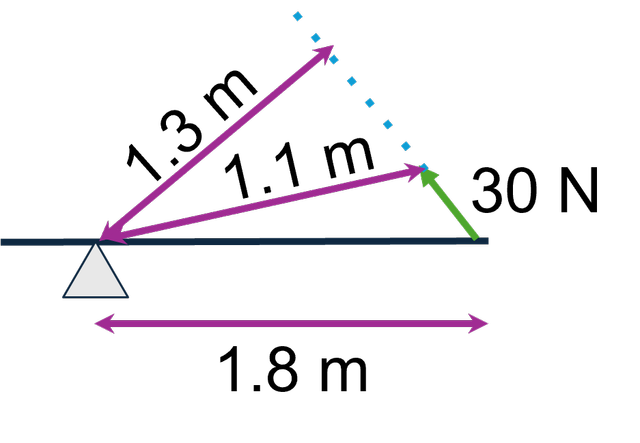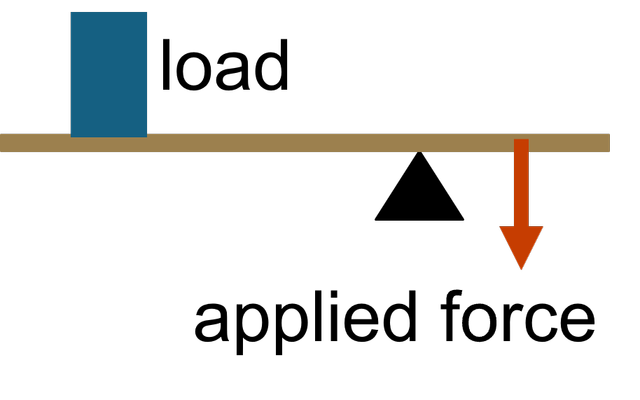Starter quiz
- Which of the following are the unit of force and its symbol?
- newtons ✓
- neutrons
- n
- N ✓
-
- An object is __________ if no resultant force acts on it.
- speeding up
- in equilibrium ✓
- changing direction
- decelerating
-
 What is the resultant force acting on the parachutist?
What is the resultant force acting on the parachutist?- 200 N upwards ✓
- 200 N downwards
- 1900 N upwards
- 1900 N downwards
-
- Which of the following conditions is required for an object to be in equilibrium?
- There are no forces acting on the object.
- There is an even number of forces acting on the object.
- The vector sum of the forces acting on the object is zero. ✓
- The forces acting on the object are all in equal and opposite pairs.
-
- When an object rotates in the same direction as the hands on a clock, the direction of rotation is called ______.
- 'clockwise' ✓
- When an object rotates in the opposite direction as the hands on a clock, the direction of rotation is called ______.
- 'anticlockwise' ✓
Exit quiz
- Match the following key terms to their definition.
- equilibrium⇔the state of an object if there is no resultant force or moment on it ✓
- moment⇔the turning effect of a force, measured in newton metres (Nm) ✓
- force multiplier⇔a lever that increases the size of an applied force ✓
- distance multiplier⇔a lever that increases the distance an applied force moves through ✓
- gear⇔a toothed wheel that rotates and is used to transfer a moment ✓
 In how many of the following situations is the box in equilibrium?
In how many of the following situations is the box in equilibrium?- 0 ✓
- 1
- 2
- 3
-
- A lever can be a force multiplier or a distance multiplier. Which of the following levers is a distance multiplier?
 What is the moment about the pivot caused by the force in the following diagram?
What is the moment about the pivot caused by the force in the following diagram?- 40 Nm clockwise
- 40 Nm anticlockwise
- 1.6 Nm clockwise
- 1.6 Nm anticlockwise ✓
-
 What is the moment caused by the force about the pivot in the following diagram? You need to choose the correct distance for your calculation.
What is the moment caused by the force about the pivot in the following diagram? You need to choose the correct distance for your calculation.- 33 Nm
- 39 Nm ✓
- 54 Nm
- 58 Nm
-
 The diagram shows a set of gears, X and Y, in a machine. Using an attached handle, a person produces a moment of 18 Nm about gear X, which rotates once. Which of the following statements are correct?
The diagram shows a set of gears, X and Y, in a machine. Using an attached handle, a person produces a moment of 18 Nm about gear X, which rotates once. Which of the following statements are correct?- Gear Y makes 3 rotations. ✓
- Gear Y makes of a rotation.
- The moment of gear Y is Nm. ✓
- The moment of gear Y is 18 Nm.
- The moment of gear Y is 36 Nm.
-
Worksheet
Loading worksheet ...
Presentation
Loading presentation ...
Video
Lesson Details
Key learning points
- A force can produce a turning effect known as a moment.
- If an object is in equilibrium, there is no resultant force or moment on it.
- moment = force × distance (M = Fd)
- Levers can act as force or distance multipliers.
- Gears can be used to transfer moments.
Common misconception
Pupils may think that a lever gives you ‘something for nothing’ when used as a force multiplier.
Ask a pupil to lift an object by a particular height (say 10 cm) without a pivot, then with a pivot and a plank as a lever to compare the effort and distance moved in each case.
Keywords
Equilibrium - The state of an object when there is no resultant force or moment acting on it.
Moment - The turning effect of a force, measured in newton metres (Nm).
Force multiplier - A type of lever that increases the size of an applied force.
Distance multiplier - A type of lever that increases the distance an applied force moves through.
Gears - Toothed wheels that rotate around an axle and are used to transfer moments.
+


